Solidworks 2019: Visualize
Even if the full support e.g. the RT cores of the Quadro RTX are only announced for Solidworks Visualize 2020, the advantages of the new Turing architecture can already be explored quite well today. That's why I'm pushing this test as an opening. A separate model from Solidworks is used, which can be easily installed online as a sample. After selecting the highest quality level and the best view, I still provided the body with a blue metallic lacquer.
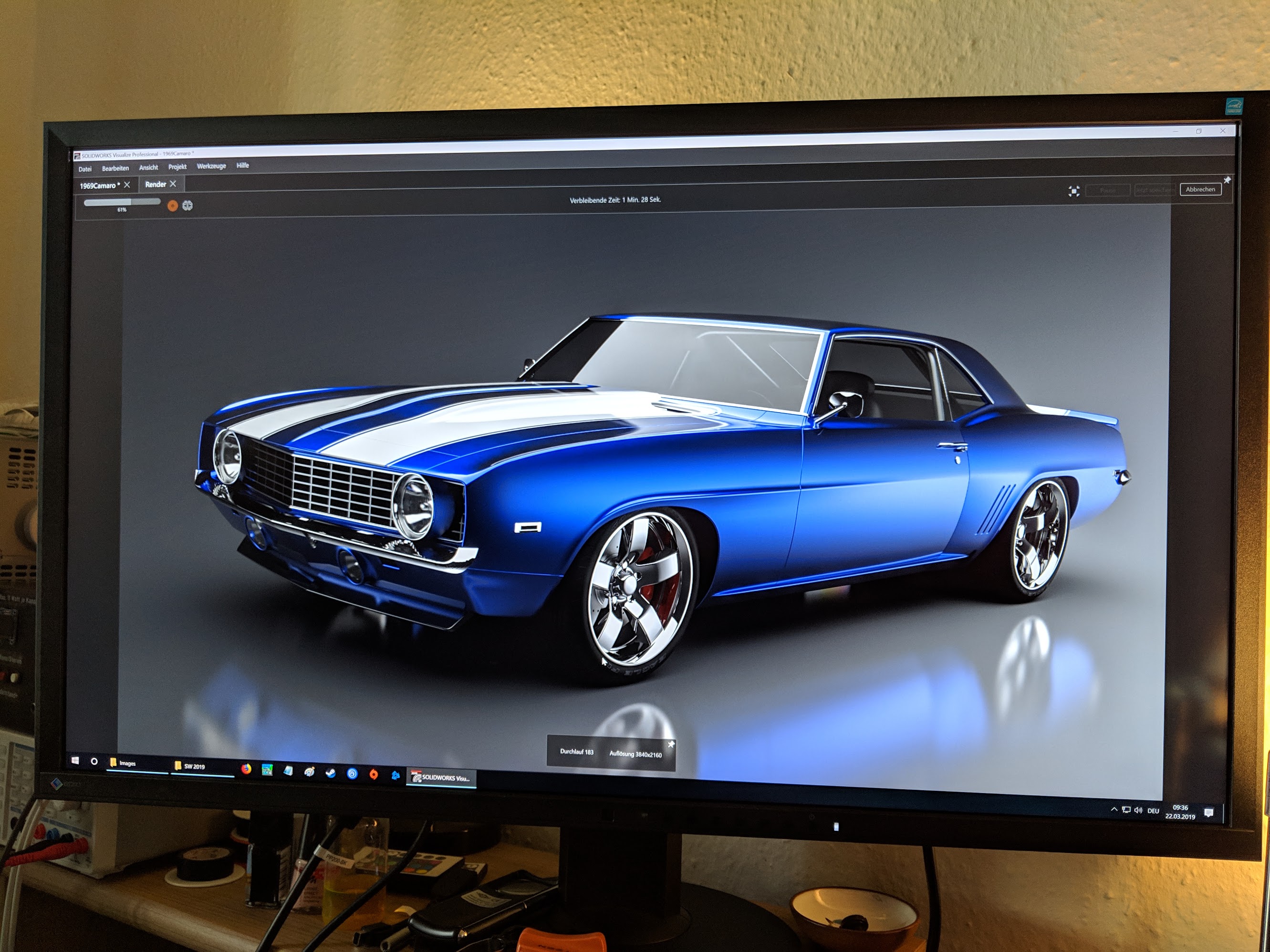
First of all, I worked without the Denoiser, and the result is already astonishing here. The AMD cards are unfortunately not supported, so I have used the Core i9-7980 XE as a replacement, but, you can see it on the bars, despite its 36 threads and a lot more bar, it is still a real fun brake. You have to really bring time with you for more complex scenes.
Already in this test, the Quadro RTX 4000 is already almost 62% faster than the Quadro P5000 and even over 85% faster than the Quadro P4000. I prefer to leave that with the CPU and the percentages out of sheer courtesy, because you see it that way. There is not only enough time for a coffee, but also easy to thoroughly clean the whole fully automatic machine.
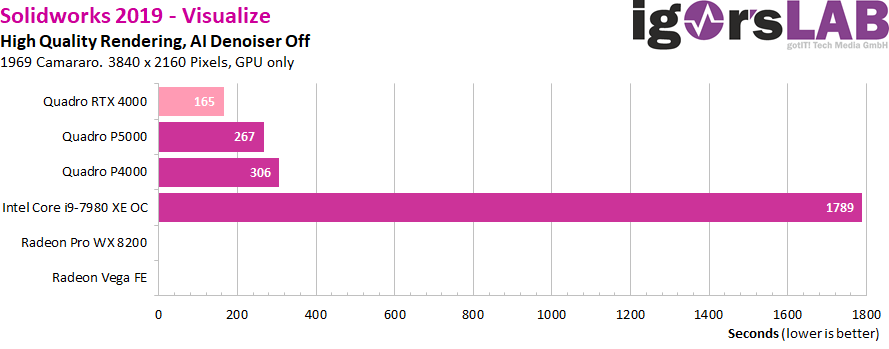
If you activate the denoiser, the lead melts to a good 33% compared to the Quadro P5000 and approx. 54% compared to the Quadro P4000, but this is still half a parallel universe. One will be curious to see what the implementation of the RT cores for rendering and the use of the tensor cores for the denoiser will bring to performance boosts.
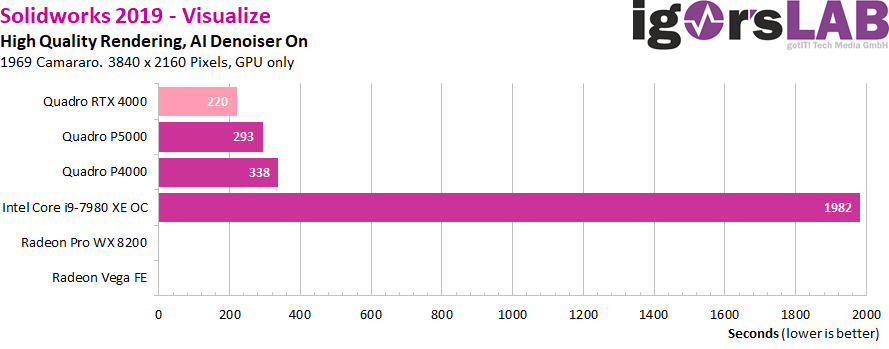
The function of the denoiser can be seen very nicely on the two pictures below, especially on the windshield, where all the small errors and grains of the grains (left) suddenly completely twist without the output losing sharpness (right).
Arion Benchmark
The whole thing is based on the commercial Arion renderer from Random Software and uses CUDA, which would unfortunately lock out the AMD graphics cards again. For generation comparison, however, this command line-based renderer is just right, so I don't want to spare it.
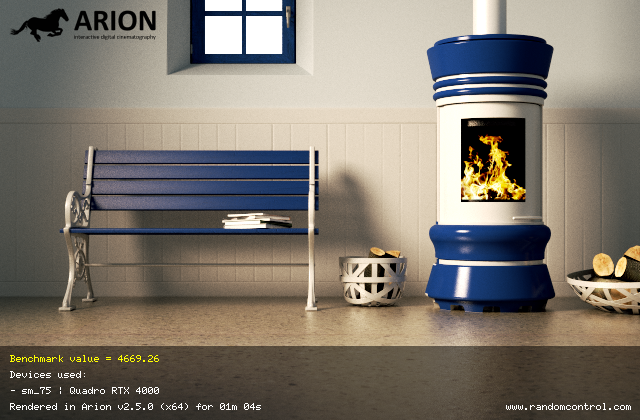
The game of just continues, because the "old" Quadro P5000 is almost declassified with over 72% advantage, while the almost 139% advantage on the only approx. 100 Euro cheaper Quadro P4000 are almost humiliating. At this value, even the large Quadro P6000 has to fit, which even surpasses a GTX 1080 Ti as a Pascal full-size extension. Turing on steroids? Well, so somehow.
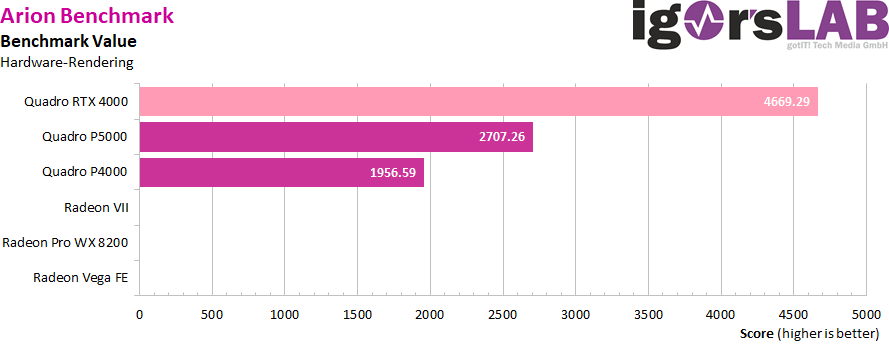
Luxmark 3.1
This benchmark based on luxrender makes all maps regenerate for the first time, which leaves a nice and interesting impression. The Radeon VII is, of course, unbeatable, but you can also see that the distance in the most complex task is the smallest. This is astonishing in that the Radeon VII and Vega-based cards have a significantly higher memory bandwidth.
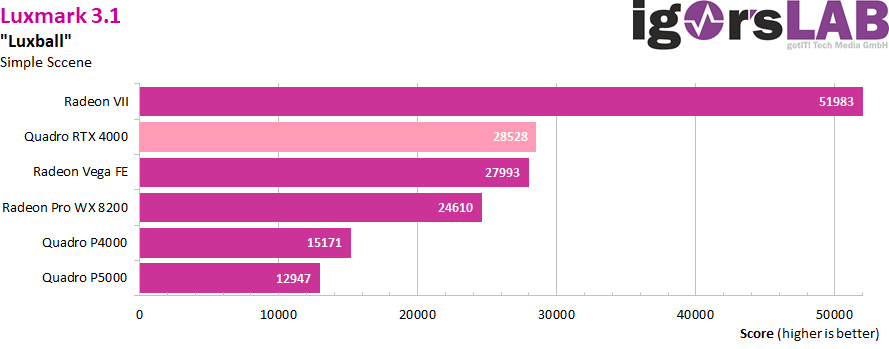
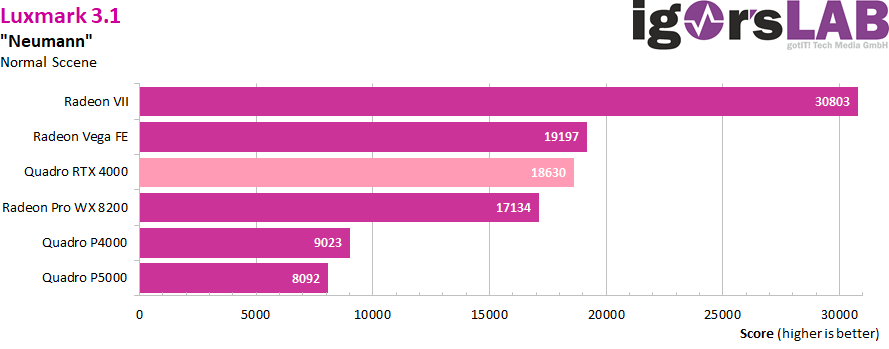
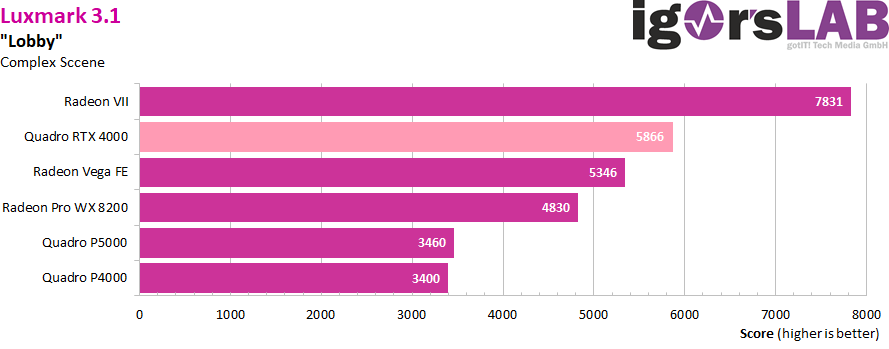
- 1 - Einführung und Datenblatt
- 2 - Tear Down: Platine und Kühler im Detail
- 3 - Visualize 2019, Arion, Luxmark
- 4 - Solidworks 2017
- 5 - Autodesk AutoCAD 2018 , Maya 2017 und 3ds Max 2015
- 6 - Creo 3 (M190)
- 7 - SPECviewperf 13
- 8 - GDI und Treiberdurchsatz
- 9 - Leistungsaufnahme, Lastspitzen und Netzteilempfehlung
- 10 - Takt und Temperaturen
- 11 - Lüfter und Lautstärke
- 12 - Zusammenfassung und Fazit




































Kommentieren